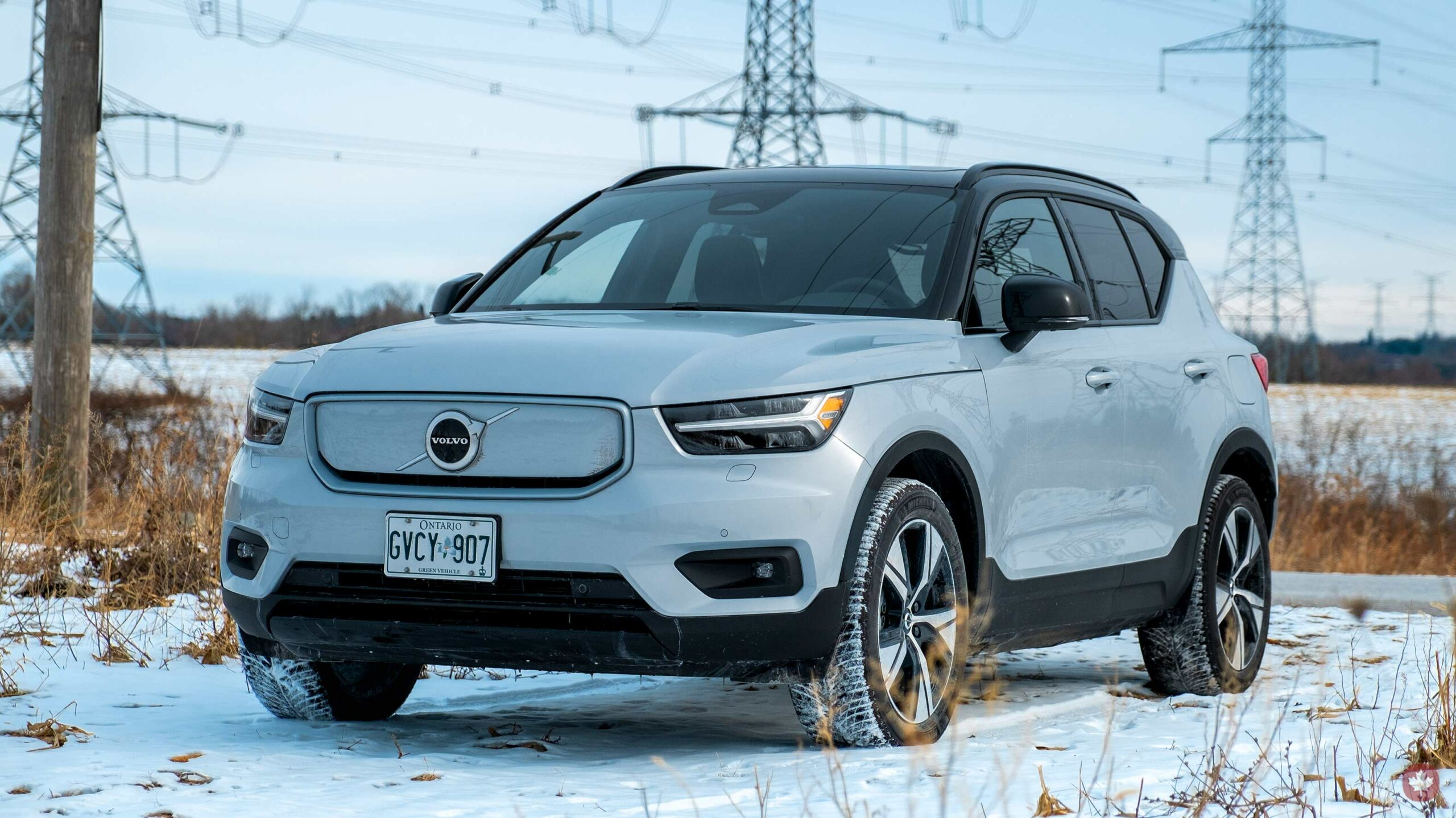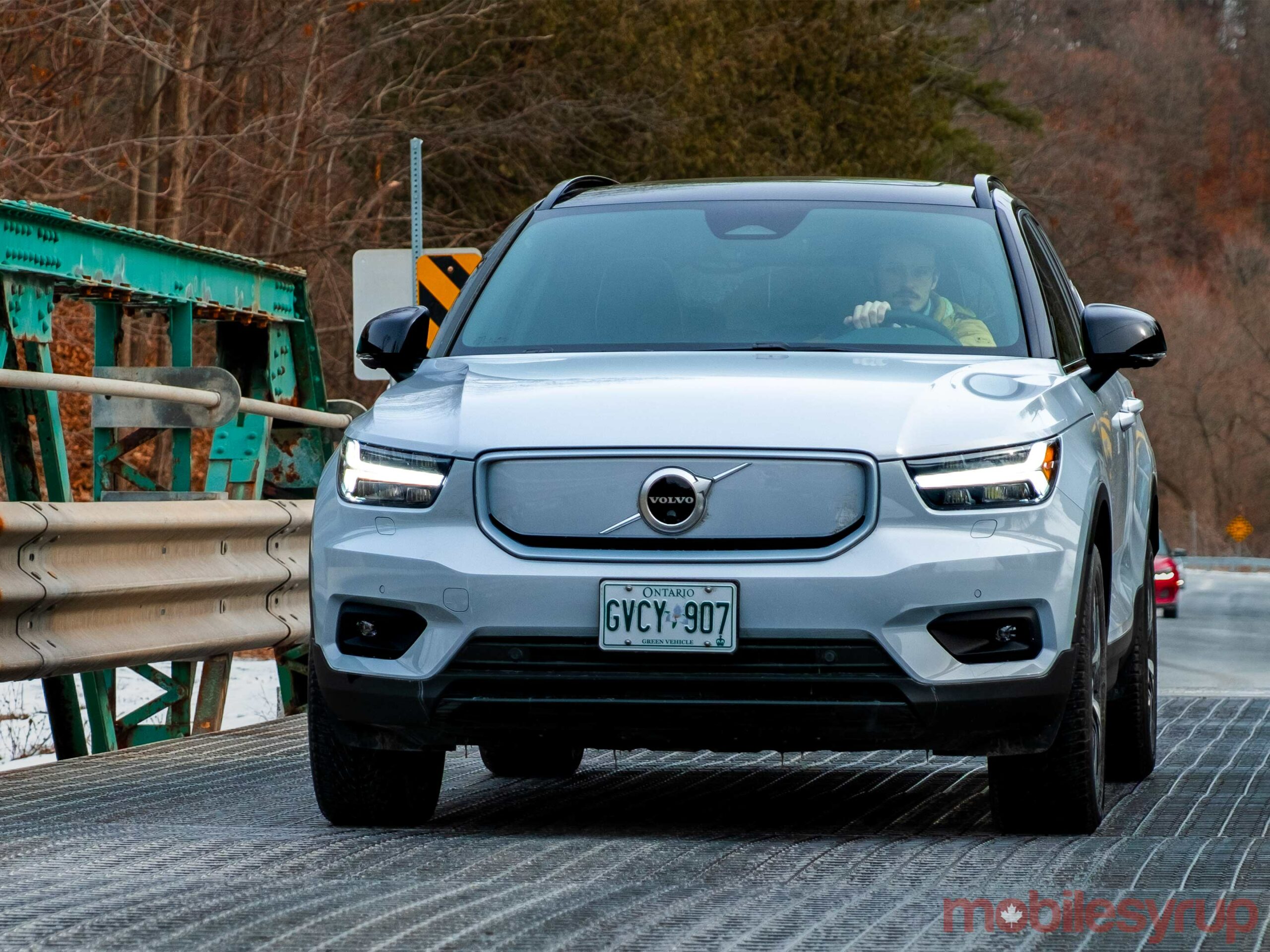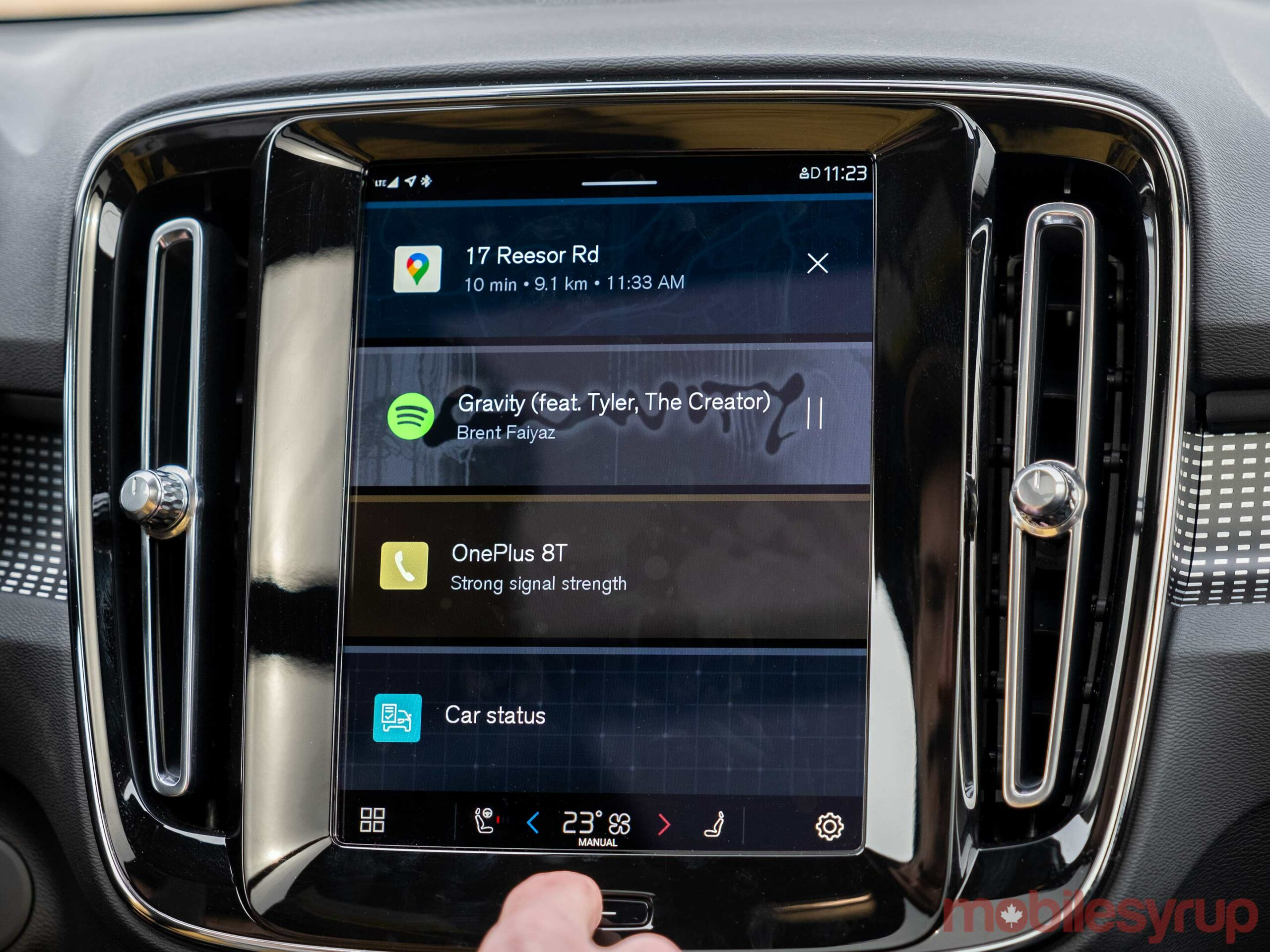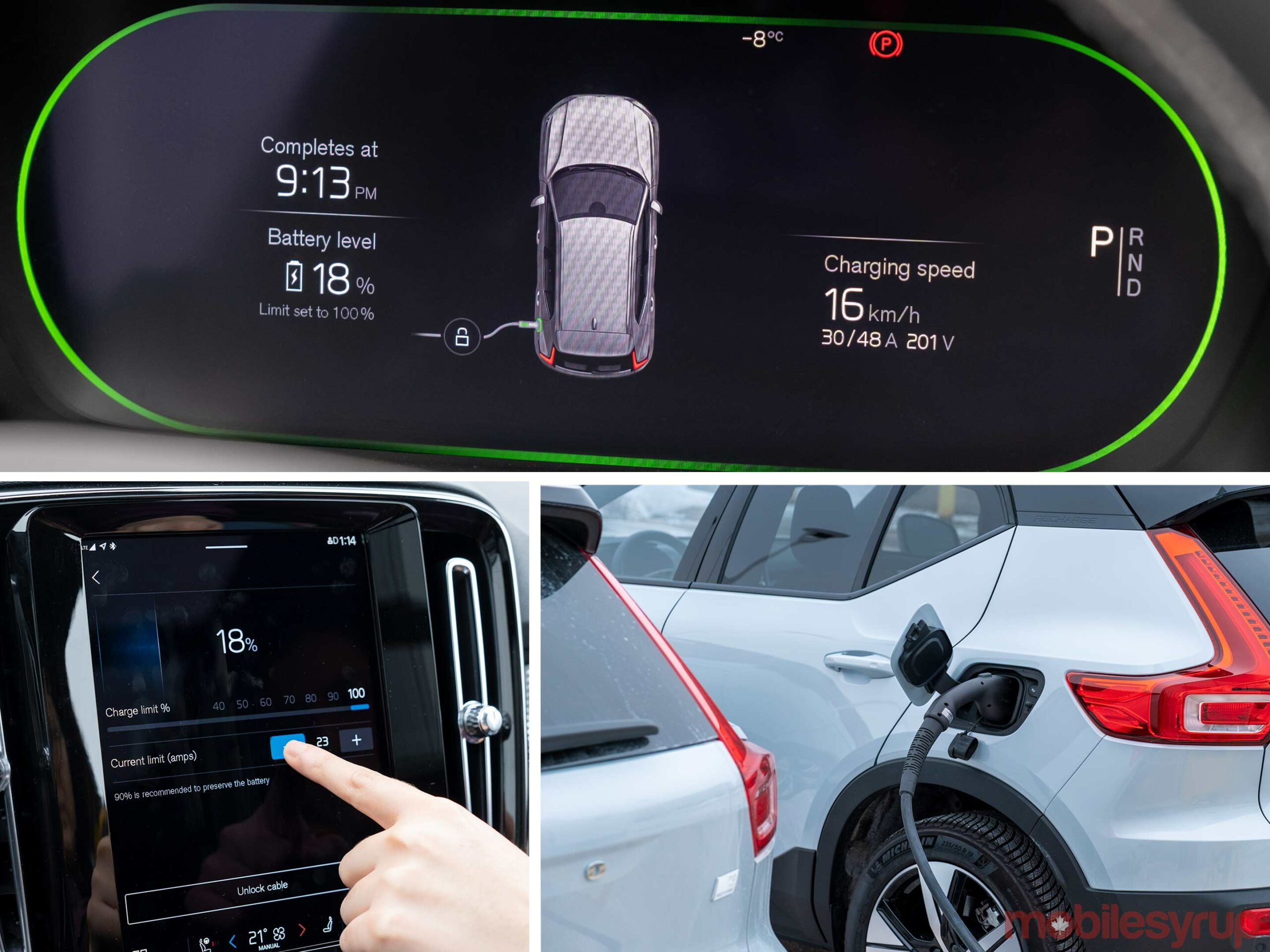
At first glance, the Volvo XC40 Recharge seems like a solid electric vehicle (EV) for everyone.
It’s cool and has futuristic stylings with Android Automotive and Volvo build quality, making this seem like a perfect car for most people.
However, it doesn’t have the furthest range on the market and while Android Automotive is still a cut above many other infotainment setups, it’s still in its infancy and could use a few more years of refinement.
That said, I enjoyed my time with the car and can see why it might appeal to some drivers. The Volvo driver assistance features also worked quite well and, as I said above, the quality of the vehicle and the ride comfort is spectacular.
The driving experience
The experience of driving from point A to B is definitely pleasing. The SUV has tight handling and the instant, infectious torque common with EVs, as well as a comfortable ride height.
While it’s not the fastest EV around, its 402 horsepower and 486 pound-feet of torque push it when you take off, making the Volvo XC40 more fun to drive than you’d expect from an SUV. It’s not nearly as fast as the Porsche Taycan or some Tesla vehicles, but it can still do 0-100km/h in 4.9 seconds, which is nothing to scoff at, especially in an SUV.
It also features an average range of around 335 km, which is pretty standard for EVs right now. However, it’s not as far as a Tesla Model Y will get you.

Like a few other EVs, you can choose to drive the XC40 Recharge with one or two pedals. The dual pedal mode feels just like driving a traditional gas-powered car and the single pedal mode takes better advantage of the vehicle’s regenerative braking. Both function fine, and if you’re looking for an EV that handles like a regular car, this is a good option.
The XC40 takes its assisted driving features very seriously. Named ‘Intellisafe Pilot Assist,’ this is part of the $2,100 ‘Advanced package’ you can purchase when buying the car. Much to my surprise, it worked well. It’s not self-driving, but the lane-guidance and adaptive cruise control work together really well on the highway.
To do this, the XC40 uses a camera mounted at the top of the windshield behind the mirror and a radar unit inside the Volvo logo to scan the road and look for obstacles.
Android Automotive-based infotainment

The real star of the show is the Android Auto-based infotainment system. This is different from the Android Auto software that runs on most Android phones when they’re plugged into cars.
This system uses Android for the backbone of the infotainment, allowing Volvo to build on top of it. The Polestar 2 sedan also has this feature, and Ford and GM recently adopted it as well. This doesn’t mean that Ford and Volvo will have the same infotainment, just that they have access to the same Google-based features.
These features include access to Google Assistant, Google Maps and an app store to download more apps. You can even download a fully-featured Spotify app to stream music on the go using your car’s 4G connection.
In action, Volvo’s interpretation of Android is smooth and the large 12.3-inch display gives apps plenty of room to breathe. It’s worth noting that apps are different on Android Automotive compared to Android Auto, for better or worse. A great example of this is Spotify. The app runs much more like a phone app in the Volvo, but that means Google Android Auto safety restrictions that stop users from looking at their screen for a prolonged period of time are missing. You can also use the keyboard while driving in the Volvo, which is weird for a company so committed to safety.
I was also disappointed to find limitations with what Google Assistant can do in the car. It can play music and navigate using Google Maps, but this time around, it can also control the AC and activate the seat warmers. When the assistant interfaces with the car, it feels cool, but once you reach its limits you quickly realize that this isn’t as fully baked as it could be. For instance, I couldn’t control the windshield wipers with voice commands.

Having said that, the fact that this is built on Android means that it can get updates pretty quickly, so I wouldn’t be surprised if the functionality gets better over time as Volvo’s software division gets more used to building with Android.
One aspect I did enjoy was the simple home screen that just displayed Maps, music, access to the phone and Google Assistant, all as large easy-to-touch cards. These cards are even adaptive, so they show your driving route and music even on the home screen.
I also really liked Volvo’s digital owner’s manual. It’s presented in a brilliant way to make that information accessible to consumers. You can even search it to find things you need quickly.
Overall, I’d still rank this infotainment leagues above most others on the market. The simple fact that it’s a smart connected system that can get apps puts it above anything Ford, GM or Volkswagen have on the market. And while I might have my issues with it, I still consider it playing on a much higher level than those companies.
If you’re looking for an EV with a smart OS that isn’t a Tesla, this is really your only option. The rest of the interior is incredibly nice and the front seats are comfortable.
Charging and range

The XC40 Recharge I drove had a 78kWh battery with 75kWh of usable space.
The Electric vehicle database rates that its real range is somewhere between 233km and 490km depending on how you drive. You’re really only going to get that max range driving around town in mild weather. Once you need to hit the highway, your range decreases, especially in cold weather.
For comparison, the website rates the Mustang Mach-E’s range somewhere between 298km to 603km.
During my day with the XC40, I picked it up at 9:30am in the cold and drove around until 1:15pm with a mix of highway and city driving. Over that time, I covered roughly 160km and took the car down from 96 to 18 percent.
When it comes to charging the XC40 Recharge has a CCS port, making it fast charging compatible. However, Volvo’s battery tech is limited to 150kWh of DC charging. The company says that this will take roughly 40 minutes to refill the car to 80 percent.
If you aim to charge it at home, you’ll likely want to get an aftermarket charger installed that’s capable of moderately fast charging, or you’ll be stuck doing overnight charges. Volvo recommends using 3.5kW or 11kW charging cables to get charging times of approximately 18.5 and 5.5 hours respectively.
A great EV with a high price

Volvo and its parent company, the Geely Group, have started a solid foundation of EVs built on its Compact Modular Architecture. Both the XC40 Recharge and the Polestar 2 show off what the company can do. It’s no slouch in the EV space, but I hope its next EV has a little bit more range and a decreased charging time.
Interior-wise, the car is comfy with lots of room to spare. The Android-backed infotainment was fast, responsive and a real joy to use, but it still needs a year or two before it truly becomes a powerhouse in the infotainment space.
I’m also a fan of the XC40’s overall style and would not be ashamed to drive it around, especially the ‘Sage Green’ colour.
All that said, it’s a tough sell when you stack its $64,950 price tag up against the Tesla Model Y, which is cheaper, has more range and starts at $56,000 CAD.
MobileSyrup may earn a commission from purchases made via our links, which helps fund the journalism we provide free on our website. These links do not influence our editorial content. Support us here.


